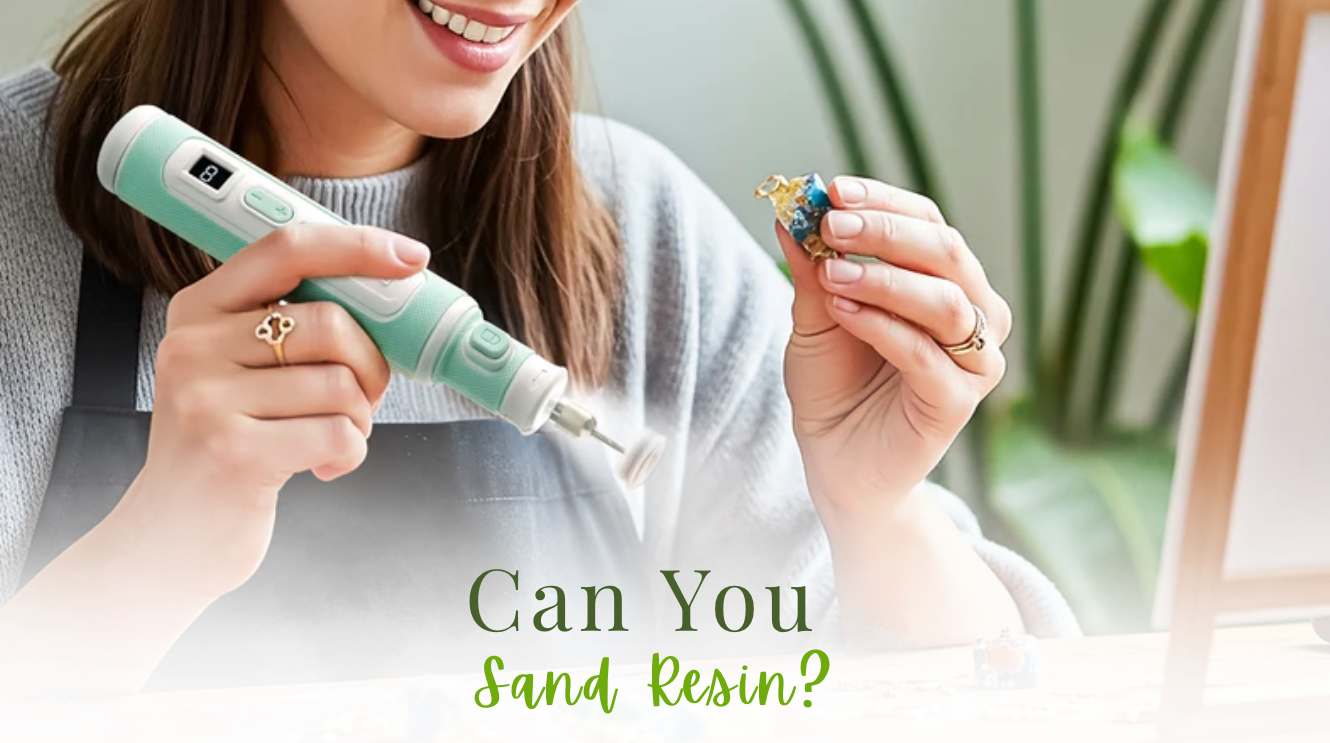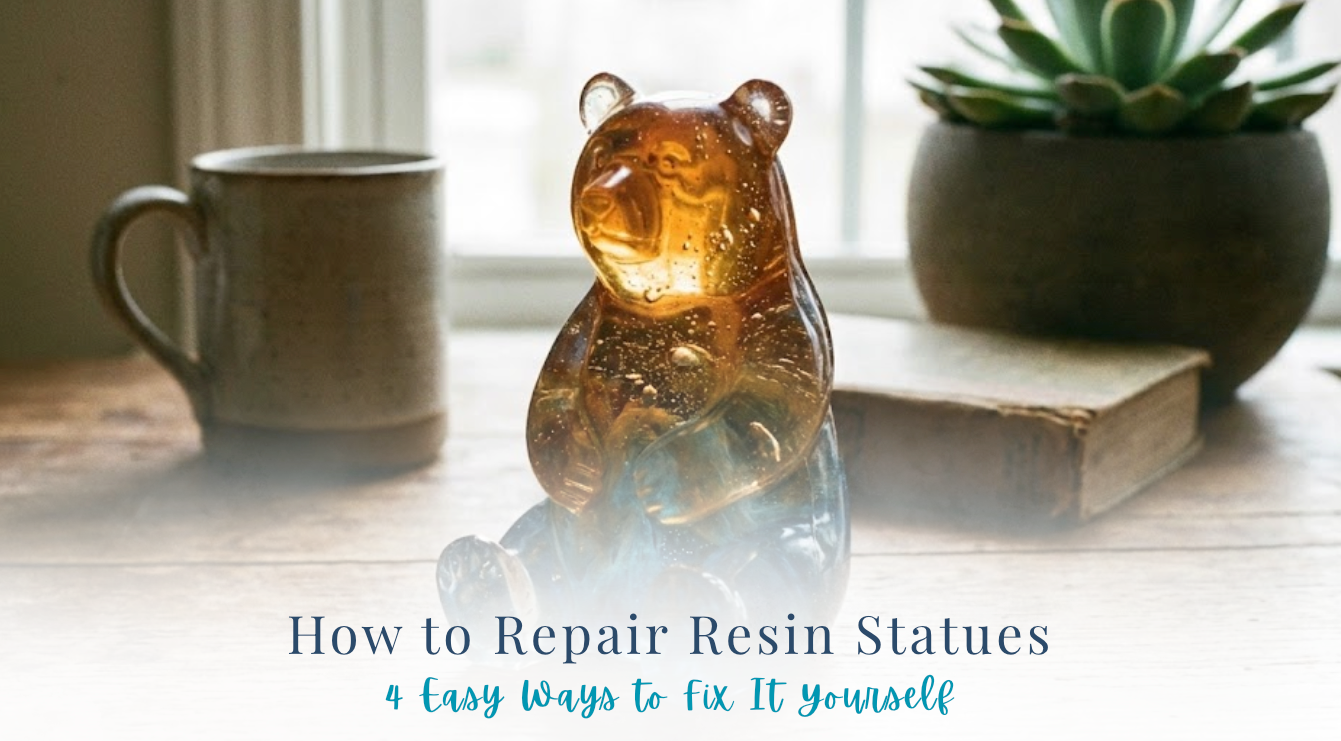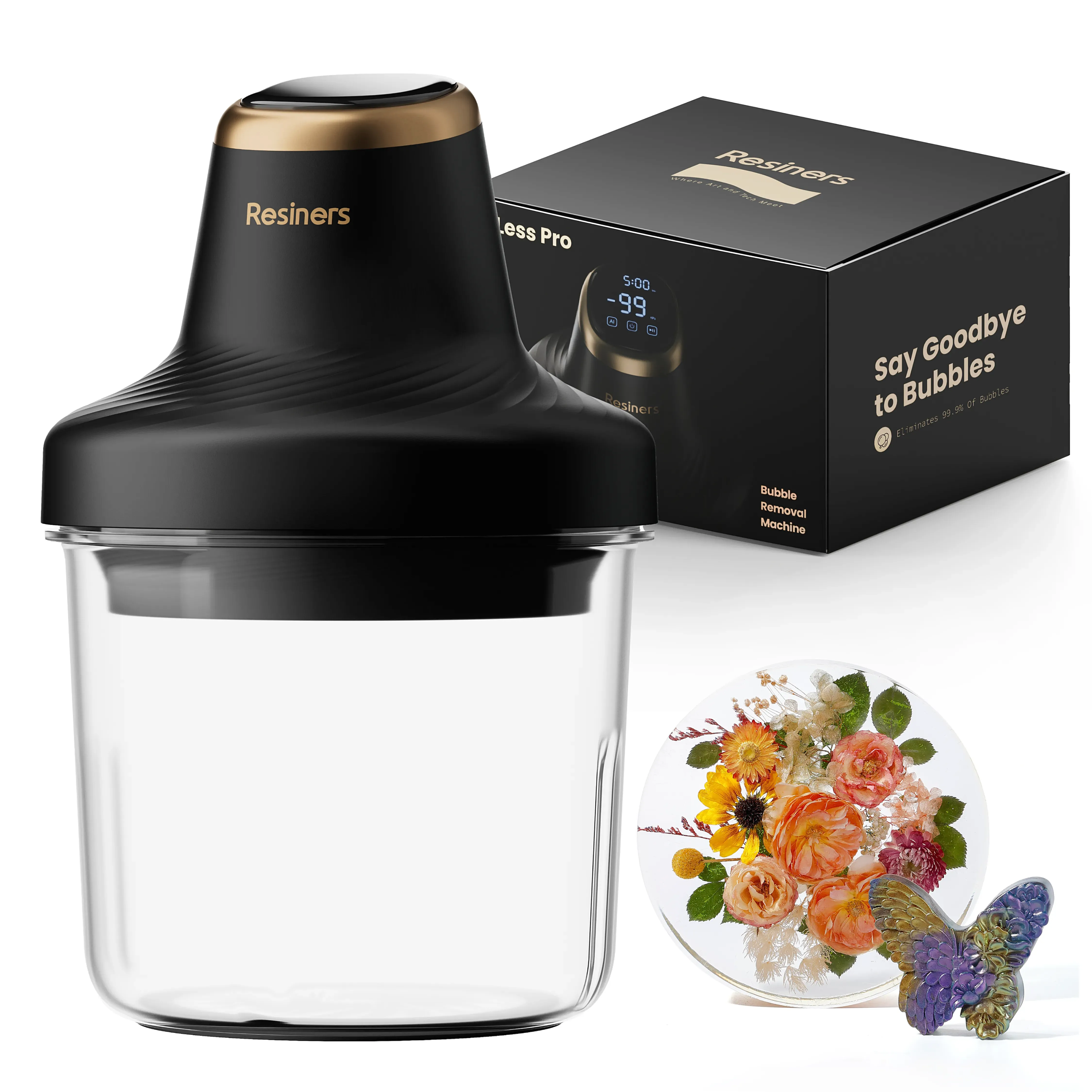Silicone molds are among the most useful tools for crafting, DIY, and even professional manufacturing.
Whether you want to make custom resin jewelry, cast candles, create soap molds, or even experiment with food-safe projects like chocolate, learning how to make a silicone mold can save you money and open endless creative possibilities.
In this guide, you’ll learn everything you need to know about making silicone molds at home, from choosing the right silicone type to preparing your master object, mixing and pouring, curing, and finally demolding.
With the right approach, you can capture fine details and create molds that last for dozens of castings.
Quick Guide 💡:
If you want the basics at a glance, here’s what you need to know:
- Pick the right silicone: tin-cure for general crafts, platinum-cure for long life or food use.
- Prepare your master object: clean, seal, and coat with mold release.
- Build a mold box: sturdy, leak-proof, and at least 10–15 mm thicker than your object.
- Mix silicone carefully: use a digital scale, mix slowly, and degas if possible.
- Pour in a thin stream from one cornerto prevent bubbles.
- Let it cure fully: respect cure times and conditions.
- Demold carefully: flex the silicone, don’t force it.
- Maintain your mold: clean, store flat, and use mold release for long life.
Shop Related Products
 |
 |
 |
What Is a Silicone Mold?
A silicone mold is a flexible, reusable container made by pouring liquid silicone rubber around an object (called a “master”) to capture its shape.
Once the silicone cures, you remove the master, leaving a cavity that can be used to cast materials such as resin, plaster, soap, wax, or even chocolate (if the silicone is food-safe).
Silicone molds are popular because they:
- Pick up fine detail
- Resist heat and chemicals
- Stay flexible for easy demolding
- Last through multiple castings
Step 1: Choose the Right Silicone Rubber
The type of silicone you choose will affect your mold’s flexibility, durability, and level of detail. There are two main types used for mold making:
-
Tin-cure silicone: Affordable and easy to work with. It’s perfect for short-term or simple molds.
Best for: Simple resin projects and crafts. -
Platinum-cure silicone: Premium quality, captures fine details, and lasts longer. It’s heat- and chemical-resistant.
Best for: Jewelry, intricate models, and professional-grade resin molds.
When buying silicone, check the product label for the working time (how long you have before it starts curing) and the cure time (how long before you can remove the mold).
👉 Also Read: Best Mold for Silicone Casting for DIY and Pro Projects
Step 2: Prepare the Master Object and Mold Box
Your master object (also called the original model) is what you’ll make a copy of. This step is crucial because the quality of your master determines how perfect your mold turns out.
Follow these steps to prepare:
- Clean the master object. Remove any dust, dirt, or oil. Even fingerprints can affect the surface finish.
- Seal porous surfaces. If your object is made of wood, clay, or plaster, apply a thin layer of sealer or Mod Podge to prevent silicone from seeping in.
- Build a mold box. You can make one from foam board, acrylic sheets, or plastic containers. The box should be slightly larger than your master, leaving at least half an inch of space on all sides.
- Secure your master. Attach it to the base of the mold box using glue or double-sided tape to prevent it from floating when you pour silicone.
- Apply mold release. Use a silicone-safe mold release spray to ensure the mold separates easily after curing.
Taking the time to set up your mold box properly saves hours of frustration later.
Step 3: Mix and Pour the Silicone Properly
Getting the mixing right is one of the most important steps for a bubble-free, detailed mold.
Here’s what to do:
- Read the product instructions carefully. Each brand has its own mix ratio. Some use 1:1 by volume, others by weight. Always follow the manufacturer’s directions.
- Measure accurately. Use a digital scale or measuring cups. Even small errors can affect curing.
- Mix slowly and steadily. Stir for 2–3 minutes, scraping the sides and bottom of your cup. Mixing too fast causes air bubbles.
- Optional step: Degassing. If you have access to a vacuum chamber, place your silicone mixture inside for a few minutes to remove air bubbles. If not, tapping the container gently on the table works too.
- Pour the silicone. Pour from one corner in a slow, thin stream. Let it flow naturally around your model. This helps push out trapped air.
Pro Tip: Don’t rush this step. Take your time pouring. Smooth, slow pouring reduces air pockets and results in clearer detail.
👉 Also Read: Best Way to Clean Silicone Molds Quickly and Easily
Step 4: Let the Silicone Mold Cure
Curing is the process where your silicone changes from liquid to solid elastic form. The curing time depends on your silicone type, temperature, and humidity.
Useful curing tips:
- Place the mold box on a flat, stable surface.
- Avoid moving or bumping it during curing.
- Room temperature (around 70–75°F or 21–24°C) is ideal.
- Curing times range from 4 to 24 hours — check your silicone’s label.
- Some silicones have a “fast cure” option if you need a quick turnaround.
When the silicone feels firm and not tacky, it’s ready to demold. Don’t rush to remove it too early or the mold may tear.
Step 5: Demold and Finish Your Silicone Mold
This is the most satisfying part — seeing your perfect mold!
How to demold:
- Gently flex the sides of the mold box to loosen the silicone.
- Slowly peel the silicone away from the master object.
- If it’s a tight fit, ease it out bit by bit instead of pulling hard.
Clean and trim: Use a craft knife or scissors to trim off overflow edges or flashing. Wash with mild soap and let it air dry.
Cure check: Press the mold slightly. If it feels rubbery and snaps back without sticking, it’s fully cured and ready to use.
Now your silicone mold is complete and ready for resin casting, candle making, or any other project.
👉 Also Read: Is It Possible to Cast Silicone in a Silicone Mold?
Pro Tips for Perfect Silicone Molds
Over time, experienced creators develop tricks that improve mold results. Here are expert-tested ones you can try:
- Always mix silicone in small batches to reduce waste.
- Use a release agent for anything that’s porous or detailed.
- For two-piece molds, create registration keys using round shapes or beads.
- Avoid moisture — it can prevent silicone from curing properly.
- Pour thinly and from a height for fewer bubbles.
- Store leftover silicone in sealed containers to extend its shelf life.
- Label your silicone containers with open dates to track freshness.
Common Mistakes to Avoid When Making Silicone Molds
Even skilled crafters slip up sometimes. Being aware of these pitfalls helps you avoid wasting materials.
- Mixing too fast traps air bubbles.
- Skipping the mold release causes the silicone to stick.
- Using low-quality silicone that tears easily.
- Pouring silicone too quickly or unevenly.
- Mismeasuring ingredients.
- Removing the mold before curing is finished.
- Ignoring temperature and humidity levels.
Documenting your process — such as noting mix ratios, working time, and temperature — helps refine your technique for next time.
Creative Projects You Can Make with Silicone Molds
Once you master mold making, you can use this skill in many fun and useful ways. Silicone molds are flexible, durable, and safe for various materials.
Popular project ideas:
- Resin casting: Create pendants, keychains, or dice.
- Candle making: Pour wax into heat-safe silicone molds for custom shapes.
- Soap making: Design handmade soaps with creative designs.
- Chocolate and baking molds: Use food-grade silicone only.
- Concrete and plaster crafts: Make textured home decor pieces.
- Miniatures and figures: Reproduce favorite toys or small ornaments.
Each project teaches you something new about molding and casting techniques, building your confidence as a creator.
How to Care for and Store Silicone Molds
Proper care keeps your molds flexible and long-lasting. Follow these tips after each use.
Cleaning:
- Wash molds gently with warm water and mild soap.
- Avoid harsh chemicals or alcohol-based products.
- Dry them completely before storing.
Storage:
- Place molds flat, not folded, to prevent warping.
- Keep them out of direct sunlight or heat.
- Lightly dust inside with cornstarch before long storage periods.
If handled correctly, your molds can last for dozens or even hundreds of uses.
Best Silicone Mold Collections for Resin Artists
If you want ready-made molds to start crafting right away or to get inspired, explore some curated options below. These stores offer top-quality, reusable molds loved by resin artists.
These collections feature flexible, non-stick molds in different shapes, perfect for jewelry, art, and home décor projects.
Conclusion
Making your own silicone molds may seem intimidating at first, but once you’ve tried it, you’ll see how simple and rewarding it is.
By choosing the right silicone, preparing your master object, mixing carefully, and letting the mold cure correctly, you’ll end up with a reusable mold that captures incredible detail.
With practice, you can move from basic one-part molds to complex two-part molds, and from resin art to candles, soaps, or even food projects. The key is to start small, be patient, and refine your technique.
FAQs: How to Make a Silicone Mold
Which silicone is best for molds?
Platinum-cure RTV silicone is the best choice for most molds because it lasts longer, has very low shrinkage, and captures fine details. It also resists tearing and holds up well for repeated castings. Tin-cure silicone is fine for simple or short-run projects, but it may shrink more and degrade faster. Always check the datasheet for pot life, cure time, and shore hardness.
How do I prevent bubbles in silicone molds?
Mix slowly, scrape the sides and bottom of the cup, and pour in a thin, steady stream into one corner so air can rise out. If you can, use a vacuum chamber to degas or a pressure pot to compress bubbles. Seal porous masters with a light clear coat to stop trapped air from outgassing. Brushing on a thin “print coat” before the main pour also helps.
Can I use any container as a mold box?
Yes, plastic food tubs, LEGO bricks, acrylic sheets, or foam board all work as long as the seams are sealed. Use hot glue, tape, or clay to stop leaks and place the box on a level surface. Apply a mold release if the box is not silicone-safe. Leave enough space around the master for proper wall thickness.
Why didn’t my silicone cure?
The most common causes are wrong mix ratios, poor mixing, or cure inhibition. Sulfur-based clays, latex gloves, certain paints, or amine-cured resins can stop platinum silicone from curing. Always do a small test on your master, or seal it with shellac or PVA first. Check temperature and humidity, and follow the manufacturer’s ratio by weight or volume.
How thick should mold walls be?
Aim for at least 10–15 mm of silicone around the object on all sides. For large, heavy, or undercut parts, go thicker to prevent flex and tearing. Make the base sturdy and add registration keys if you plan a two-part mold. A rigid mother mold or outer jacket can support big silicone molds.
Are silicone molds safe for food?
Only use platinum-cure silicones that are labeled food-safe for chocolate, fondant, or ice. Keep food molds and tools separate from those used for resins or plaster to avoid contamination. Follow the cure time and temperature limits on the datasheet before first use. Wash the mold with mild soap and warm water and let it dry fully.












Hinterlasse einen Kommentar
Diese Website ist durch hCaptcha geschützt und es gelten die allgemeinen Geschäftsbedingungen und Datenschutzbestimmungen von hCaptcha.